There have never been more options of dog and cat food for our furry friends. Back in the good old days, dogs were fed whatever the humans didn’t eat, and cats ate whatever they hunted down. Today, pet food is a multi-billion dollar industry.
But is commercial pet food actually better and safer for Rover and Mittens? As more independent research is done into the health benefits of commercially processed dog and cat food, more pet owners and pet professionals are opting toward raw diets for their pets.

It’s called BARF: Biologically Appropriate Raw Food, and it’s a movement that’s sweeping the pet industry. The idea is to feed your dog or cat completely un-processed raw meat (including the bones and organs therein) and occasional fruits, vegetables, eggs, etc. Some opt for ground-up raw food (kinda looks like raw hamburger but with bits of bone thrown in), others will simply toss Fido a chicken carcass, cow heart, or eggs at meal time.
While some people have always fed their dogs this way, the raw feeding community has exploded in popularity over the past 5-10 years, and there are die-hard advocates on both sides of the argument.
Let’s take a moment to consider both the pros and cons of feeding our dogs and cats a raw diet.
PRO: It’s Natural
This one is hard to argue against. Dogs and cats are animals, and they evolved to eat this stuff.
Commercial, processed dog and cat food contain fillers, byproducts, and preservatives that can actually be harmful to pets, since they did not evolve to eat those types of foods. Also, the processes by which a lot of commercial pet food is processed makes the nutrient content questionable.
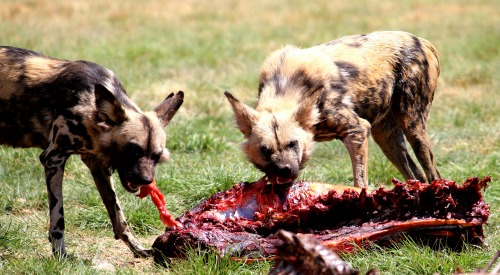
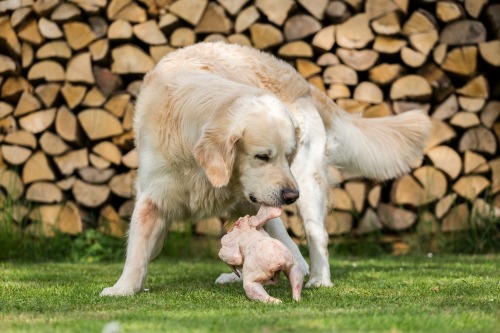
CON: It’s Inconvenient
Scooping a cup of kibble and pouring it into a feeding dish is as easy as it gets. Compare that to the daily chore of thawing out raw food, supervising Fido while he devours it, and then massive amounts of cleanup because you don’t want bacteria growing everywhere… not to mention the extra freezer space required to store all that raw meat! There’s no question that commercial dog food is far more convenient than feeding raw.
PRO: It’s healthy
When done right, a raw diet is incredibly healthy for our pets. The key here, is to do it right – to consult an animal nutritionist or holistic veterinarian and make sure that the raw diet you feed your pet contains all the proteins, fats, amino acids, vitamins, etc. they need in order to live a healthy lifestyle.
If you compare a wholesome raw diet to a commercial professed diet, it’s like comparing you eating a healthy diet full of fruits and vegetables to one where you’re eating hungry man dinners every day. You’ll survive on either… but which is healthier?
There are numerous independent studies which show that pets who are fed wholesome raw diets are at a much lower risk for serious health conditions such as cancer and auto immune diseases.
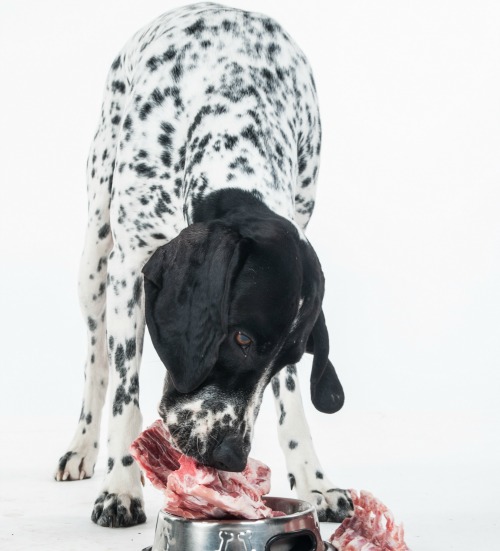
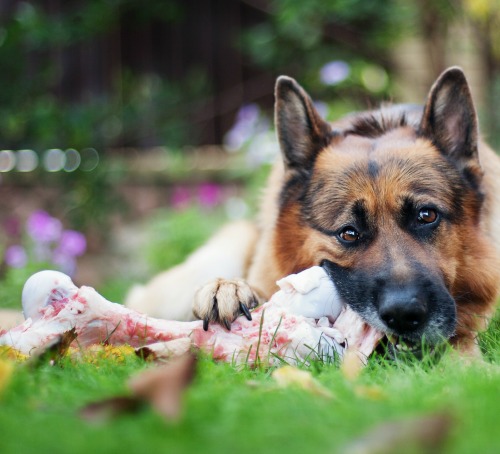
CON: It’s not regulated
Commercial dog and cat foods are strictly regulated and monitored. There are standards all pet food providers must adhere to, including the types of ingredients their food can and cannot contain, and the nutrients that must be present in their food.
Now, there are commercial brands of raw food that also follow these regulations. But if you feed your pet your own raw diet, it’s important to make sure that 1) you’re not feeding them anything dangerous and 2) the dog/cat is receiving all the nutrients they need to live a healthy life.
PRO: Limited Ingredients
Allergies in pets are more common than they’ve ever been, especially in dogs. When food allergies are suspected, the dog is put on an elimination diet to try and determine what he’s allergic to. Elimination diets usually consist of highly expensive prescription dog food that is usually a commercial processed dog food made with a novel protein and only sold at vet offices.
The problem is that even “limited ingredient” commercial dog foods contain a substantial amount of ingredients, including fillers, preservatives, and grains that should be avoided. A raw diet can contain as little as one ingredient. This is often the best option for food-sensitive dogs and cats!
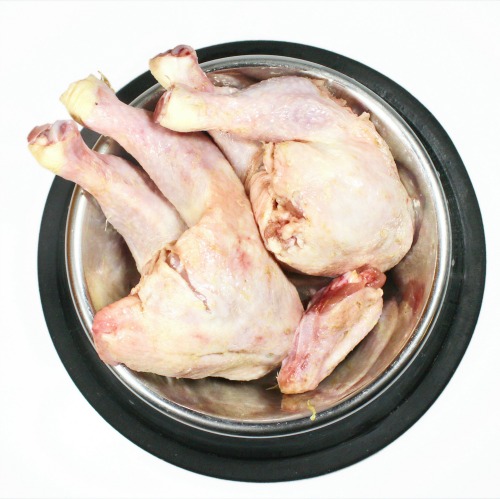
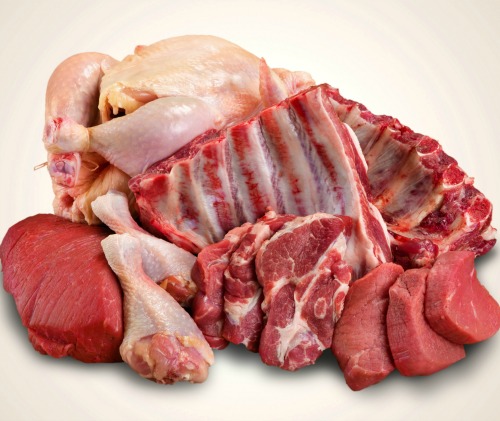
CON: Health Risks to Humans
Handling raw meat should always be done with care, whether the meat is used in cooking or in feeding your pet. If you’re feeding a raw diet, you need to be much more vigilant about keeping prep and feeding areas clean and disinfected after each meal. This includes counter tops, feeding bowls, sinks, cutlery, and floors. Otherwise, humans in the household can become sick if they come into contact with contaminated surfaces.
There are some controversial studies which show that dogs and cats who are fed a raw diet are more likely to transmit bacteria that can be harmful to people with weakened immune systems. Though these studies are not conclusive, caution is advised if the pet comes into regular contact with infants, the elderly, or any person in an immunocompromised state.
The bottom line
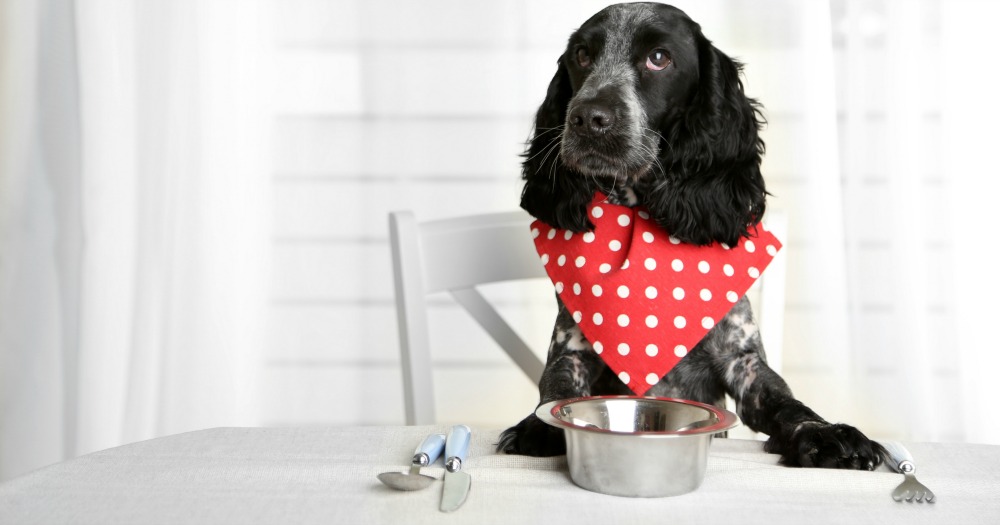
Full disclosure, I feed my dogs raw as much as I can. And while I’m a strong advocate of non-processed dog food, I also understand the reservations some people have about moving their pet to a raw diet.
I’ve often looked at raw diets for dogs and cats as the equivalent of the paleo diet for humans. It’s not for everyone, and certainly there are ways to screw it up… but when done right there’s really no arguing the health benefits.
The good news is, there is a middle ground. If you’re not comfortable moving to an all-raw diet, there are some pet foods that are less processed, such as cold-formed kibble or dehydrated foods. These are less of a leap then moving to the raw food end of the spectrum. There’s also the option of simply adding fresh ingredients to your pet’s current diet. Every little bit of fresh food helps!
What are your opinions on raw feeding? Let us know in the comments!
Did you know you can easily make your own dog treats at home? Check out these healthy homemade dog treat recipes!



